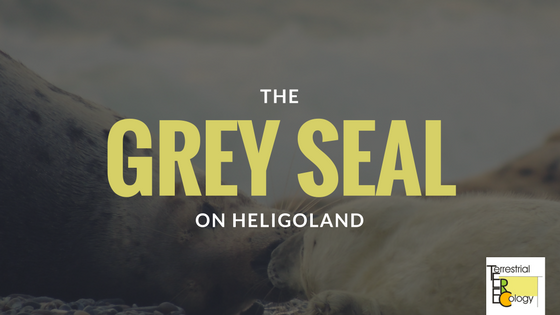The North Sea is one of the most intensely used marine areas with over 80 million people living within 150 km from its shore and harboring one of the largest heavy industrial areas in the world. This intense use by humans comes with severe impacts on its manifold ecosystems for centuries but especially since industrial times.
Yet, over the last decades there has been a tremendous effort to protect the local biodiversity ranging from the establishment of a network of national parks to protect the Waddensea in the Netherlands, Germany and Denmark, which later reached UNESCO World Heritage status, to protection of Seabirds and large marine mammals of which the Grey Seal (Halichoerus grypus) is the local apex predator.
Thanks to its protected status, the remaining Grey Seal populations in the North Sea started to increase after they declined for decades and became locally extinct in the southern North Sea. For the recolonization of the Waddensea, the little island of Heligoland turned into a stronghold for the local Grey Seal population.

Doing my community service on the island in 2004/05 I first came into contact with the local population that was founded in the late 90’s and by the time of my community service had an output of around 30 pups during the winter. I became so intrigued by the development of the local population – also thanks to unique observation conditions – that I kept an eye on them in the years after. As the Helgolandian population reached a new all-time high in the pupping season 2007/2008 with 53 pups, I decided to write my first ever publication for an international journal with my back then mentor Kai Abt who runs a seal monitoring across the German Waddensea.
In our paper, we estimated a population growth trend of a stunning 35% which led us to the daring prediction that “pup production at Helgoland would rise to about 500 by 2017”. Now – a decade after the paper’s publication we saw that the Helgolandian Grey Seals do really well, outnumbering the pup production numbers of the preceding year, year after year… From 354 pups in the season 2016/2017 this year the numbers are already surpassing 415 by the end of December 2017 with still some weeks to go for the reproduction season. These numbers go straight towards what we predicted in our paper a decade ago.
To me personally, this is a big moment. This work marked the beginning of my academic career. The first paper is something very special and I can still remember my excitement when it became accepted. The fact that this happened a decade ago somewhat scares me though, and I feel really old now 😉

Anyway, it is very nice to see that the Helgolandian Grey Seals still keep track on our predictions turning Heligoland into a little Patagonia every winter and providing unique nature experiences with Central Europe’s largest predatory marine mammal. If you haven’t done so, make sure you visit the colony in the future!
